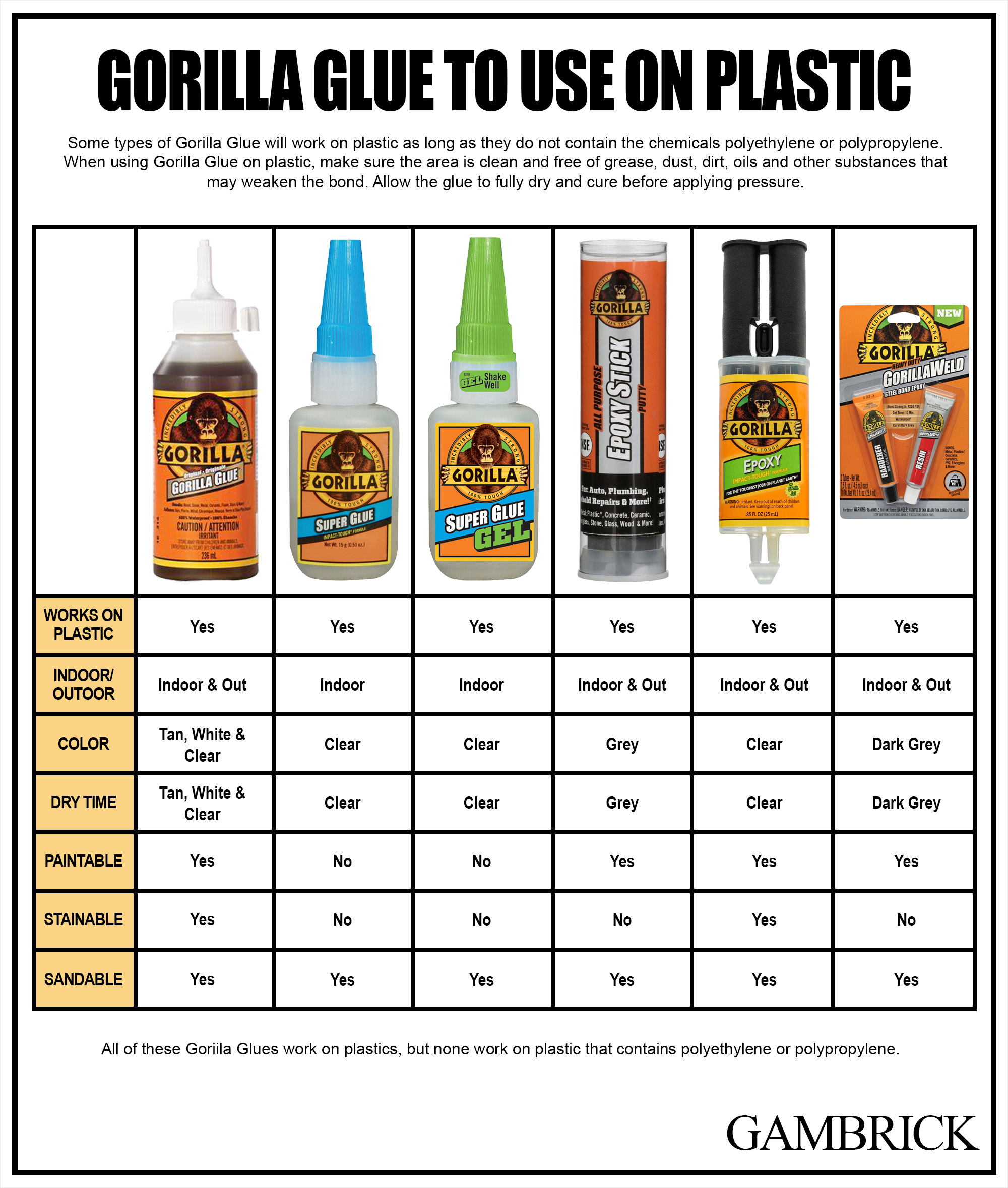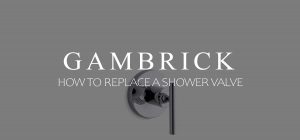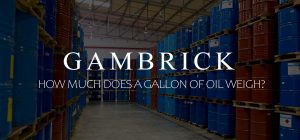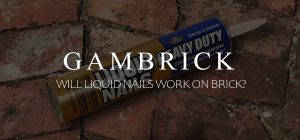Does Gorilla Glue Work On Plastic?
Gorilla Glue is a popular adhesive that’s well known for its strength and durability. It can be used for a variety of applications which includes bonding plastic surfaces. We use regularly to repair damaged plastic tools and architectural models. However, there are some things you need to know before using Gorilla Glue on plastic. Yes, Gorilla Glue will work on plastic, but you need to use the right kind. There are different types of Gorilla Glue designed for a variety of projects and materials. I recommend using Gorilla Super Glue Gel or GorillaWeld to glue plastic. Gorilla Super Glue dries in just 10 to 45 seconds, doesn’t drip and is very tough. GorillaWeld is a two part, super strong epoxy, that works better for gluing larger plastic pieces. But neither type works on polyethylene or polypropylene plastic or similar materials.
Will Gorilla Glue work on plastic? The answer is Yes, Gorilla Glue works on almost all types of plastic as long as conditions are right and you use the right type of Gorilla Glue. Ideal conditions include: surfaces must be clean, dry, and dust-free, and the plastic can not contain polyethylene or polypropylene. Make sure and use a Gorilla Glue product that says specifically for use on plastic because not all types pf Gorilla Glue will work.
To help Gorilla Glue stick to plastic, scuff the surface with light sandpaper. It’s easier for adhesives to bond with a rough surface vs a smooth one.
The two most important things to remember when using Gorilla Glue on plastic are:
- Buy the right type of Gorilla Glue.
- Scuff the surface a bit before gluing.
- Avoid gluing plastic with polyethylene or polypropylene.
In this post, we’ll discuss the pros and cons of using Gorilla Glue on plastic along with some helpful tips and a chart showing every type of Gorilla Glue detailing what types actually work on plastic.
Which Gorilla Glue Is Best For Plastic?
The three best types of Gorilla Glue for plastic are Gorilla Super Glue Gel, GorillaWeld and the original formula Gorilla Glue.
- Gorilla Super Glue Gel, also referred to as cyanoacrylate glue, or CA glue, works on a variety of materials, including plastic. It’s thick enough to use vertically because it doesn’t drip and dries strong in just 10 – 45 seconds. I use it regularly to repair small plastic tool parts and build plastic architectural models.
- GorillaWeld is a two part epoxy adhesive made by Gorilla that works great on plastic. It’s super strong with 4250 PSI bond strength and sets in just 10 minutes. I use it to bond and repair larger pieces of plastic.
- Original Formula Gorilla Glue works on most plastic, except those made with polyethylene and polypropylene. I don’t use this formula much because the Gorilla Super Glue and GorillaWeld work so well that I don’t need it. But I’ve tested it out and it worked fine every time I’ve used it.
When I glue small plastic parts I always use Gorilla Super Glue Gel. It works great, bonds strong and dries very fast. But if I can;t find it the Original Gorilla Glue is a good substitute that works on most plastics.
When I have to glue larger pieces of plastic, like for repairing damaged plastic tools, I always use GorillaWeld. It’s a two part epoxy glue that’s super strong with 4250 PSI strength. It’s easy to mix, use and hardens fast in just 10 minutes.
You can but these Gorilla glues at just about any hardware store, Home Depot, Lowes, Walmart or online.
Gorilla Super Glue Gel
Gorilla Super Glue Gel forms a seal without clamping or moisture which makes it stick better to plastics than Original Formula Gorilla Glue. But unfortunately, it still does not bond well to all plastics.
- Impact Tough: The glue contains unique rubber particles which increase impact resistance.
- Anti Clog Cap: Keeps glue from drying out once you open the bottle.
- Fast-Setting: Dries in just 10-30 seconds without clamping.
- Versatile: Bonds to plastic, wood, metal, ceramic, rubber and more.
According to the manufacturer, Gorilla Super Glue Gel is “Not recommended for use on polyethylene or polypropylene plastic or similar materials.”
One of the benefits to Gorilla Super Glue Gel is that it’s a thick glue, so you can use it vertically because it doesn’t drip.
I use it to glue small pieces of plastic when repairing damaged tools or for building architectural models.
GorillaWeld Epoxy
GorillaWeld is a two-part epoxy that works really well on plastic.
It’s super strong with 4250 PSI bond strength and sets in just 10 minutes.
The glue comes in either two syringes or two tubes. One contains the resin and the other a hardener. When the two ingredients are mixed together it creates a super strong adhesive that works on plastic.
GorillaWeld is not recommended for use on polyethylene or polypropylene plastics
I use GorillaWeld to glue larger pieces of plastic together because it’s much stronger than Super Glue. It dries really hard and grey. Excess material can be cut or sanded away to create a smooth surface. And it can be primed and painted to hide the glue joint.
Gorilla Glue Original Formula
Original Formula Gorilla Glue is a great adhesive that bonds to a variety of surfaces including most plastics. But it doesn’t set as fast as Gorilla Super Glue requiring clamping for about an hour to bond vs 10 – 45 seconds for super glue.
It also doesn’t have as much strength or versatility as either super glue or epoxy. But it’s still an affordable all around great glue that works on plastics.
The original formula dried tan but it now comes in white and clear.
The formula is water resistant but not waterproof.
Gorilla Glue Original Formula will work on many types of plastic, however it’s not recommend for use on polypropylene (PP) or polyethylene (PE) plastics or any type of rubber with high oil or plasticizer content.
I use Original Formula Gorilla Glue as a third option to super glue and epoxy. It’s sandable and paintable which makes it easy to hide the glue joint.
Why Doesn’t Gorilla Glue Work On Polyethylene & Polypropylene Plastic?
The Original Formula Gorilla Glue works on most types of plastic. But not on plastic that contains polyethylene and/or polypropylene. So what are polyethylene and polypropylene plastics and why doesn’t Original Formula Gorilla Glue stick to them?
The most common type of plastic is polyethylene which comes in three types:
- Polyethylene Terephthalate. PETE or PET plastics are used for food and liquid containers, fibers in clothing, and combined with glass fibers to make engineering resins.
- High-Density Polyethylene. HDPE is made from petroleum. It’s used to make plastic bottles, pipes, and plastic lumber.
- Low-Density Polyethylene. LDPE is used to manufacture containers, bottles, tubing, laboratory equipment and most plastic bags.
Polypropylene (PP) is used in labeling and packaging. It’s a rugged, white plastic with a high resistance to chemical changes.
Many plastics either contain polyethylene or polypropylene which some types of Gorilla Glue won’t stick to.
To know if Gorilla Glue will work on the type of plastic you’re gluing, do a quick search online to see if it contains either of these two chemicals.
Polyvinyl Chloride (PVC) is another type of plastic. It’s used to make rigid PVC pipes, bottles and non-food packaging and credit cards. Gorilla Glue has no problem sticking to this type of plastic because it doesn’t contain polyethylene and/or polypropylene.
How Does Gorilla Glue Stick To Plastic?
Gorilla Glue, like most adhesives, is activated by water. Therefore, plastics that can’t absorb liquid don’t bond well with Gorilla Glue. Although Gorilla Glue has expanded its line of products to include a wide variety of ingredients so some types stick to plastics better than others.
Most types of Gorilla Glue is considered a rapid-cure polyurethane glue. The technical term is cyanoacrylate.
Cyanoacrylate adhesives cure rapidly in just 10 – 45 seconds, are solvent-free, and contain a single adhesive compound.
Gorilla Glue bonds to almost any material but has trouble with the following:
- Plastic that contains polyethylene and/or polypropylene
- Teflon
- Extremely smooth surfaces
Gorilla Glue doesn’t stick well to plastics that are extremely smooth because cyanoacrylate creates a chemical bond between the glue and water. Almost all surfaces contain some moisture except for plastics. Without moisture, the cyanoacrylates can’t create a bond.
Gorilla Glue expands into a material’s pores to create a strong bond. However, since most plastic is extremely smooth and contains no water, any bond it makes is weak.
Another type of Gorilla Glue is called Gorillaweld. It’s an epoxy glue that comes in two separate syringes containing an adhesive in one syringe and a hardener in the other. It doesn’t dry in the 10-45 seconds like super glue and isn’t a cyanoacrylate, but it works better on plastics.
How Do You Use Gorilla Glue On Plastic?
Using Gorilla Glue on plastic is very easy to do.
The parts should be clean and dry before you glue them. I use regular dish washing soap and warm water with a soft rag. Clean the parts you’ll be gluing thoroughly. Wipe away any oils or grease that could prevent the glue from sticking. Also make sure there’s no dust or dirt on the parts.
I like to scuff the plastic a little bit with a light sandpaper prior to gluing. Creating a rough surfaces gives the glue more pores to hold onto. This especially helps when the plastic is extremely smooth. But don’t over sand or you could ruin the plastic or diminish it’s appearance.
Make sure you have some clamps if the Gorilla Glue your using takes more than a minute to bond.
Here are steps you need to follow when using Gorilla Glue on plastic:
- Preparation: Surfaces must be clean and free of dirt, dust, oils and grease.
- Sanding: I use some light sandpaper to scuff the area I’ll be gluing. Use a cloth to wipe away dust created by the sanding.
- Glue: Apply Gorilla Glue to the dry and clean plastic surface. If you’re using Original Gorilla Glue, make sure to dampen the area with a spray bottle prior to gluing.
- Pressure: Clamp or press the surfaces together evenly and tightly. Depending on the type of glue you’re using and the objects you’re gluing, you may need to use fasteners like rubber bands or clamps to help.
- Clean: Excess wet glue that has squeezed out can be wiped off with a dry cloth before it hardens.
- Finish: Once the glue has dried, sand, chisel, or cut dried glue off. If you’re painting the plastic parts, Gorilla Glue can be primed and painted to hide the joint.
How Long Does Gorilla Glue Take To Dry On Plastic?
How long it takes Gorilla Glue to dry on plastic depends on the type you use.
Here’s a breakdown showing each type of Gorilla Glue and how long it takes to dry on plastic:
- Gorilla Super Glue: Dries in 10 – 45 seconds
- GorillaWeld: Sets in 10 minutes
- Gorilla Epoxy: Sets in 5 minutes
- Gorilla Epoxy Stick: Sets in 10 minutes
- Original Gorilla Glue: Dries in 60 minutes
Keep in mind that glue may appear hard and dry but still may not be fully cured. As a general rule I always let glue sit for a few hours after it’s hardened before I put any pressure on it. Generally, the longer it takes glue to initially harden the longer it needs to cure.
Because Original Formula Gorilla Glue takes 60 minutes to dry, I let it sit and cure for about 24 hours before putting weight on it.
How To Store Gorilla Glue After Using?
Chances are you won’t us the entire tube or bottle of Gorilla Glue and will have to store the remaining glue.
If you leave the tube or bottle open the glue will quickly dry out, harden and become unusable. This is a common issue with fast drying glues. And it can get expensive considering Gorilla Glue can cost over $10 per bottle.
A common problem on construction sites is losing or damaging the cap. This makes sealing the bottle and preserving the glue more difficult to do. But luckily I have some tips I’ve learned over the years that can help.
Here are some of the ways how you can re-use your Gorilla Glue again and again even if you lose the cap:
- The easiest way to store Gorilla Glue after use is to tightly place the cap back on.
- Always seal the bottle immediately once you’re done applying glue because it dries fast.
- If you lose the cap, taping over the opening will keep air out. Make sure the no air can get through the tape or the glue will dry out.
- Silicone caulk can seal a glue bottle.
- Inserting a screw into the bottle hole can seal it.
As long as you seal air out of the bottle, your Gorilla Glue will stay fresh for months.
The Benefits Of Using Gorilla Glue On Plastic?
There are a few good adhesives on the market that work on plastic but Gorilla Glue is one of the best. I like their entire range of glues, tapes, sprays and adhesives and use them on just about every house I build.
When I need to glue plastic parts I use either Gorilla Super Glue Gel and GorillaWeld the most.
Gorilla Super Glue Gel is better for gluing small plastic parts and building models. Gorillaweld is better for gluing larger, heavier plastic parts because it has a much higher PSI.
Here are a few of the benefits to using Gorilla Glue on plastic:
- GorillaWeld is super strong, durable, weather and water-resistant and dries fast. These are all big benefits when you’re working on a construction project.
- Nails can’t be used on plastic which is where a high quality adhesive like Gorilla Glue is important. It’s also great when you want to hide the bond or make repairs to a cracked piece of plastic.
- Gorilla Glue can be used both indoors and outdoors depending on the type.
- It’s a relatively safe adhesive to use which generally isn’t harmful if it gets on your skin. But make sure not to get any in your eyes or swallow it.
- If you seal the tube properly Gorilla Glue can be used again and again.
- They make a wide variety of products that work on all sorts of materials including plastic, metal, concrete, wood, fabric, foam, particle board and many more.
- Gorilla Glue is very easy to use on plastic. You just squeeze product on the bonding surface and stick them together. However, if the plastic is non-porous and very smooth you should scuff it up or score it before applying adhesive. Always make sure the plastic is clean and free of grease, oil, dirt and debris before gluing.
How Do I Get Gorilla Glue Off My Hands?
To get Gorilla Glue off your hands, be patient and soak the area in warm soapy water. Gently rub the area to loosen glue until it starts to come off. Over time the glue’s bond will start to weaken and fall off.
If you don’t have the patience for soap and water, here are a few ways to do it faster:
- You can use acetone to remove Gorilla Glue stuck to your skin. Always follow the manufacturer’s instructions.
- Fingernail polish remover is another way to remove stuck on Gorilla Glue.
Both acetone and nail polish remover will dry your skin. I like to apply some moisturizer afterwards to counteract the drying effects.
Can I Use Gorilla Glue On Plastic Dishes?
No, Gorilla Glue shouldn’t be used on any items that come in contact with food. If swallowed, contact poison control.
I also wouldn’t use Gorilla Glue on plastic toys that may end up in a child’s mouth.
Does Gorilla Glue Work On Plastic Glasses Frames?
Yes, Gorilla Glue will work on plastic glasses frames. But you need to use the correct type.
To glue plastic glasses frames, use Gorilla Super Glue, Gorilla Epoxy, GorillaWeld and Original Formula Gorilla Glue. Each of these Gorilla Glue works on plastic. But because glasses frames are generally small and hard to clamp, I recommend Gorilla Super Glue Gel.
Gorilla Super Glue Gel is a fantastic glue for gluing plastic glasses frames. The gel is thick so it won’t drip and dries hard in just 10 – 45 seconds. It’s also clear so the glue joint will be hard to see.
If the plastic glasses frames contain polyethylene and/or polypropylene Gorilla Glue won’t work. But luckily these chemicals aren’t found in most frames.
Does Gorilla Glue Work On Car Plastic?
Yes, Gorilla Glue will work on car plastic. But you need to use the correct type.
To glue plastic car parts, use Gorilla Super Glue, Gorilla Epoxy, GorillaWeld and Original Formula Gorilla Glue. Each of these Gorilla Glue works on plastic.
Gorilla Super Glue Gel is a fantastic glue for gluing small car parts. The gel is thick so it won’t drip and dries hard in just 10 – 45 seconds. It’s also clear so the glue joint will be hard to see. I use it to glue small car parts inside the car and not in the engine bay.
For gluing larger car parts or parts that are near heat or constant vibration I use epoxy. Epoxy glue is much stronger than super glue and is better for larger parts.
If the plastic car parts contain polyethylene and/or polypropylene Gorilla Glue won’t work.
Before gluing the car parts, make sure they’re clean and free of any grease, oils and dirt. Scuff the area a bit before applying the glue. Scuff marks create more surface area for the glue to adhere.
Summary: Does Gorilla Glue Work On Plastic?
Gorilla Glue is a popular adhesive that’s well known for its strength and durability. It can be used for a variety of applications which includes bonding plastic surfaces. We use regularly to repair damaged plastic tools and architectural models. However, there are some things you need to know before using Gorilla Glue on plastic. Yes, Gorilla Glue will work on plastic, but you need to use the right kind. There are different types of Gorilla Glue designed for a variety of projects and materials. I recommend using Gorilla Super Glue Gel or GorillaWeld to glue plastic. Gorilla Super Glue dries in just 10 to 45 seconds, doesn’t drip and is very tough. GorillaWeld is a two part, super strong epoxy, that works better for gluing larger plastic pieces. But neither type works on polyethylene or polypropylene plastic or similar materials.
Will Gorilla Glue work on plastic? The answer is Yes, Gorilla Glue works on almost all types of plastic as long as conditions are right and you use the right type of Gorilla Glue. Ideal conditions include: surfaces must be clean, dry, and dust-free, and the plastic can not contain polyethylene or polypropylene. Make sure and use a Gorilla Glue product that says specifically for use on plastic because not all types pf Gorilla Glue will work.
To help Gorilla Glue stick to plastic, scuff the surface with light sandpaper. It’s easier for adhesives to bond with a rough surface vs a smooth one.
The two most important things to remember when using Gorilla Glue on plastic are:
- Buy the right type of Gorilla Glue.
- Scuff the surface a bit before gluing.
- Avoid gluing plastic with polyethylene or polypropylene.
If you have any questions or comments about Gorilla Glue email any time.






















